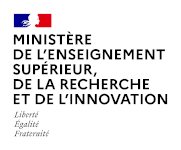Recommended Practices for Online Supplemental Journal Article Materials
About These Recommended Practices (Part A excerpts)
This project began with an informal survey conducted by Sasha Schwarzman of the American Geophysical Union in October 2009 on how publishers handle supporting materials in scientific journals. The survey results were distributed to the CrossRef and eXtyles mailing lists and generated both interest and feedback. In recognition of the importance of this topic, the National Information Standards Organization (NISO) and the National Federation of Advanced Information Services (NFAIS) co-sponsored a roundtable discussion in January 2010 to discuss the need for standardized bibliographic and publishing policies for Supplemental Materials. (The previous year the National Federation of Advanced Information Systems (NFAIS) had published a related recommended practice on publishing journal articles.) More than 60 people in attendance participated in a very lively discussion; among the group’s recommendations was the formation of a working group to develop recommended practices addressing the business, policy, and technical issues surrounding Supplemental Materials. The NISO-NFAIS Working Group on Supplemental Journal Materials was formally convened in August 2010, and this document is the result of their work.
In 2012, although the trend toward large numbers of Supplemental Materials being released with journal articles is continuing, no recognized set of practices exist to guide selection, delivery, aids to discovery, or preservation plans. With no commonly accepted guidelines, authors and readers encounter a confusing array of practices, and editors and publishers had no industry basis for decision-making. Related parties such as librarians, publishers of abstracting and indexing services, and repository administrators likewise must deal with disarray in what previously had been a relatively structured scholarly environment. In response to this growing problem, the members of a joint NISO-NFAIS Working Group developed this set of recommended practices. They are intended to help publishers and editors guide authors and peer reviewers in their work and to provide a common framework for the delivery of Supplemental Materials. They are intended to be prospective, not to deal with previously published works.
Part A: Business Working Group Recommendations – Draft for Committee Approval / May 15, 2012
1 Introduction
1.1 Purpose and Scope
These recommended practices are intended to help the scholarly publishing community develop a more standardized approach to publishing what has become known as Supplemental Materials for Journal Articles in a rapidly changing technology environment. The intent is to lessen the burden on all of the parties engaged in the publishing process, to ensure that Supplemental Materials delivered in connection with journal articles add substance to the scholarship, to make Supplemental Materials more discoverable, and to aid in preserving them.
Existing Supplemental Material may predate electronic publishing. For example, older journals, which have been digitized post-publication, may have had microfiche supplements. In an ideal world, all would be digitized; however, available resources may preclude applying these recommendations to older materials. Consequently, publishers may wish to concentrate their efforts only on future articles.
…
Part B: Technical Recommendations – Draft for Public Comment / July 25, 2012 – September 15, 2012
1 Introduction
1.1 Purpose and Scope
Part B discusses the technical considerations regarding the Supplemental Materials policies and practices described in Part A. It offers recommendations on metadata needed to manage the Supplemental Materials throughout their lifecycle. It provides recommendations on persistent identifiers and on preservation and packaging of Supplemental Materials. Some of the metadata is considered to be required in order to enable linking and to provide context. Other metadata is considered optional, such as elements that would be helpful in improving discoverability.
Following the May publication of the National Information Standards Organization (NISO) and the National Federation for Advanced Information Services (NFAIS) Recommended Practice on Online Supplemental Journal Article Materials, Part A: Business Policies and Practices (PDF), they have issued Part B: Technical Recommendations (PDF) in draft for comment.
The recommendations have been developed to respond to the need for a set of practices to guide in the selection, delivery, discovery, or preservation of supplementary materials published alongside journal articles. NISO and NFAIS jointly sponsored a working group to establish best practices that would provide guidance to publishers and authors for management of supplemental materials and help solve problems for librarians, abstracting and indexing services and repository administrators.
This second part proposes a metadata schema, a tag library and provides tagged examples. The draft is open for comment until mid-September.
…






